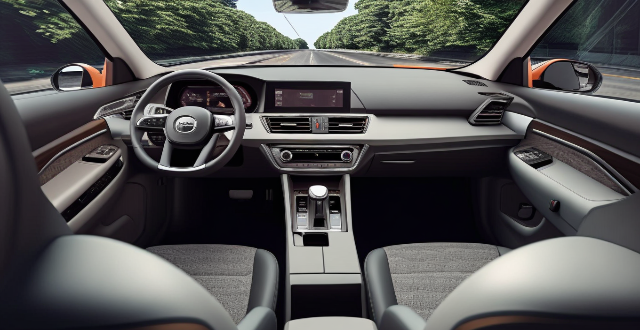The evolution of car interior design over the past decade has been characterized by a focus on comfort, technology integration, and sustainability. Key trends include increased technological integration such as infotainment systems and advanced driver assistance systems, enhanced comfort and convenience through ergonomic design and climate control, and a push towards sustainability with the use of recycled materials and lightweight design. Personalization and customization options have also expanded, along with safety features like airbags and whiplash protection.

Car Interior Design Evolution Over the Past Decade
The evolution of car interior design over the past decade has been marked by a shift towards greater comfort, functionality, and technological integration. This transformation has been driven by advancements in technology, changing consumer preferences, and increased focus on sustainability and environmental concerns. Here are some key trends and developments that have shaped car interior design in recent years:
1. Increased Technological Integration
- Infotainment Systems: Touchscreen displays have become larger and more intuitive, offering seamless integration with smartphones and other devices. Voice recognition systems have also improved, allowing drivers to control various functions hands-free.
- Digital Instrument Clusters: Many newer cars feature digital instrument clusters that can be customized to display a range of information, from vehicle performance metrics to navigation details.
- Connectivity Features: Features like Apple CarPlay and Android Auto have become standard, providing easy access to music, messaging, and navigation apps.
- Advanced Driver Assistance Systems (ADAS): Technologies such as adaptive cruise control, lane keeping assist, and automatic emergency braking are becoming more common, often integrated into the dashboard or center console.
2. Enhanced Comfort and Convenience
- Ergonomic Design: Seats and steering wheels now offer greater adjustability to accommodate different body types and driving preferences.
- Material Quality: There has been a trend toward using higher-quality materials, including soft-touch plastics, leather, and real wood accents, to create a more luxurious feel.
- Climate Control: Advanced climate control systems with zones for individual passengers provide greater comfort and customization options.
- Storage Solutions: Innovative storage solutions, such as hidden compartments and adjustable cup holders, help keep the interior organized and clutter-free.
3. Sustainability and Environmental Considerations
- Recycled Materials: Manufacturers are increasingly using recycled materials in their interiors to reduce waste and promote sustainability.
- Ventilation Systems: Better ventilation systems help maintain air quality inside the vehicle, reducing the need for air fresheners and improving overall health for passengers.
- Lightweight Design: To improve fuel efficiency, car manufacturers are adopting lightweight materials for interior components, which also contribute to reducing the vehicle's overall weight.
4. Personalization and Customization
- Customizable Lighting: Ambient lighting systems allow drivers to choose from a variety of colors and intensity levels to suit their mood or preference.
- Personalized Settings: Many vehicles now save driver profiles, including seat positions, radio stations, and climate control settings, making it easy to switch between different drivers without adjusting settings manually each time.
5. Safety Features
- Airbags: The number and placement of airbags have increased, providing better protection for all passengers in the event of an accident.
- Whiplash Protection: Headrests and seats are designed to minimize whiplash injuries during rear-end collisions.
- Visibility Enhancements: Larger windows, slimmer pillars, and advanced mirror systems improve visibility, reducing blind spots and enhancing safety.
In conclusion, the past decade has seen significant advancements in car interior design, focusing on increased comfort, technology integration, sustainability, personalization, and safety. As technology continues to evolve at a rapid pace, we can expect even more innovative changes in the coming years.